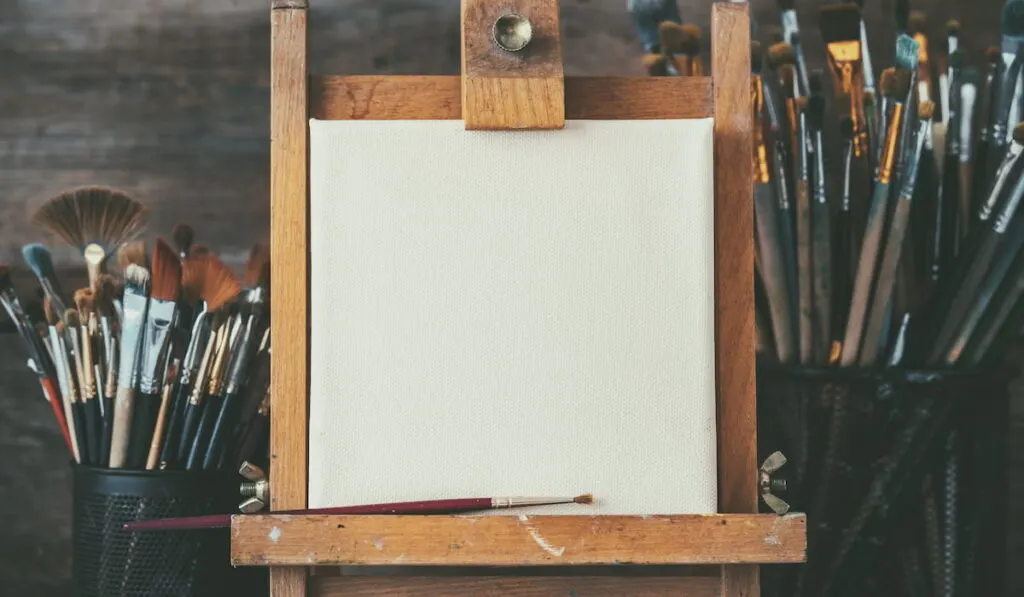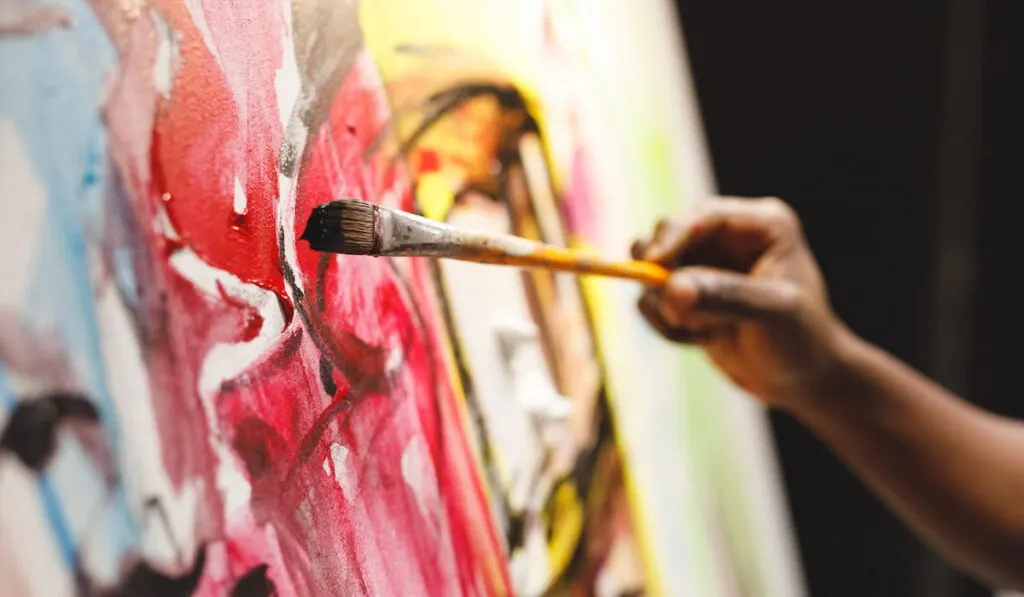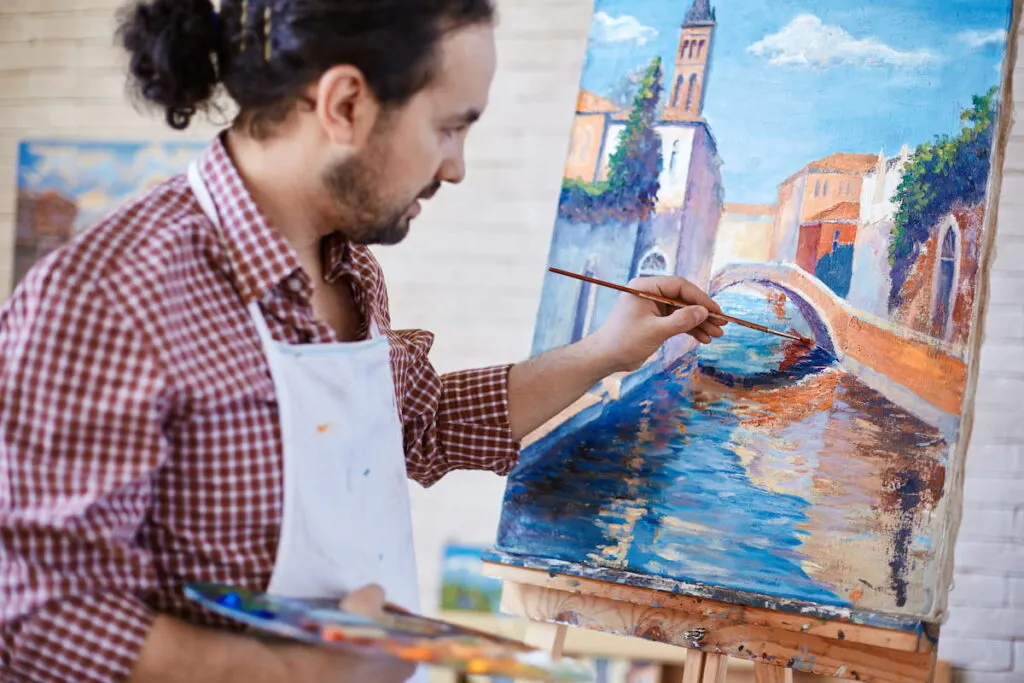People receive inspiration at times that are unpredictable. You may be walking in a park or sitting at your dining room table, and suddenly you feel the urge to express yourself creatively. Most of the time, you’re not going to have all of the supplies on hand, so you have to improvise.
As you stare at a blank canvas, you wonder what you’ll make, and then you start digging through your art supply drawers to see what you have to paint with. Then, you come across some fabric paint and wonder how it will do on canvas?
The good news is that fabric paint does very well on canvas. You’ll be able to paint something with vibrant colors or cool tones depending on what you’re going for.
The main issue with fabric paint on canvas is that you will want to prime the canvas first so the colors stay strong and true to their original hue.
Canvas is a Popular Medium for Artists
For centuries, artists have been painting on canvas. It is used for large tapestries, flags, banners, and a host of other art projects.
Usually, the canvas is made from linen or cotton fibers, or some combination of the two. Cotton is cheaper than linen, so you’ll see a lot more canvas made with cotton.
Generally, canvas is a relatively affordable fabric for art projects, and manufacturers make canvas fabrics with recycled materials, so it’s eco-friendly as well.

Things to Know When You’re Painting Canvas with Fabric Paint
Perhaps the most important thing to remember when you paint on canvas is to prime it. Applying a primer will stop the paints from soaking too far into the fabric and becoming dull.
With a good primer on your canvas, your paint will stay true to its original colors and your vision will come out better in your art.
You can buy primer online or in any paint or art supply store. Typically, primer comes in a can or a spray bottle that you’ll cover the canvas with first and let dry before you begin painting.
Aside from the primer, you need to make sure that your canvas fabric is taut when you start painting. Canvas is a tough material, so pulling it completely flat is difficult.
However, getting it right is very important to the success of your art project. If it’s not completely flat, your brush will run into creases and bumps that will end up making gaps or spaces in the final version.
For the best results, use tools and clips to pull the canvas taught before you apply the primer. This will better ensure that the entire surface is primed and then you’re good to go!
How Fabric Paint Does on Canvas
Most artists use oil paints, acrylic paints, or tempera paints when they’re painting on canvas. If you have those, that’s great.
But most likely you’re here reading this because you’re interested in using fabric paints on your canvas, either because you want to try something new or you only have fabric paint at hand to use.
Whatever the case may be, fabric paint works fairly well on canvas because it’s a close relative of traditional acrylic paints.
The main difference between traditional acrylic paint and fabric paint is that it has a different formula that stops the paint from stiffening the material it’s on.
Fabric paint is also very crack-resistant. It’s designed to go on tougher materials and around corners. Traditional art paints are a lot more sensitive to temperature, wear and tear, and other similar conditions.
Keep in mind that your paint, whether you’re using fabric paint or any other type of paint, is going to dry quickly on canvas. It’s a dry material that sucks up the moisture very fast, so you won’t have a lot of time to spare once it’s on there.
Just something to know so you don’t leave your brushes laying around, and you correct errors quickly before they set in and make things more difficult.

Canvas Painting Techniques
If the creative juices strike you like lighting, you may not have a lot of time to prepare in terms of supplies. However, the more time you can put into preparation, the better the result will be.
Whether you’re painting a landscape or want to make a large backdrop for a school play, canvas fabric is a versatile material that works well and is easy to find.
All we can say is that using fabric paint on canvas will definitely work, but priming it first and knowing the idiosyncrasies of fabric paint will help you make your art project or anything else you try turn out better.
Remember, it’s going to take some time for the primer to dry. Be patient and don’t start painting on the canvas until you know it’s fully dry. Keep it taut and you’re good to go.
Painting on Canvas Items
Creators don’t just paint on large blank sheets of canvas. A lot of times, people like to customize canvas bags, shoes, backpacks, and chairs. Painting on a pair of canvas shoes, for example, is a terrific way to make them unique and truly yours.
The same principles apply whether you’re painting a canvas sheet or a tote bag. Prime as best as you can, keep it taut, and correct errors quickly before the paint dries.
One thing you should try is to sketch what you want to paint with a pencil before you begin. Just don’t draw the lines in too strongly or you’ll still be able to see pencil lines even after the paint is on.

No matter what you’re doing, have fun, and do your best. Canvas is a great material and you can explore making different things with a little bit of effort.
In the end, painting should be fun and relaxing, and hopefully, your project will be something you feel proud of every time you look at it. Good luck with your canvas painting project!
